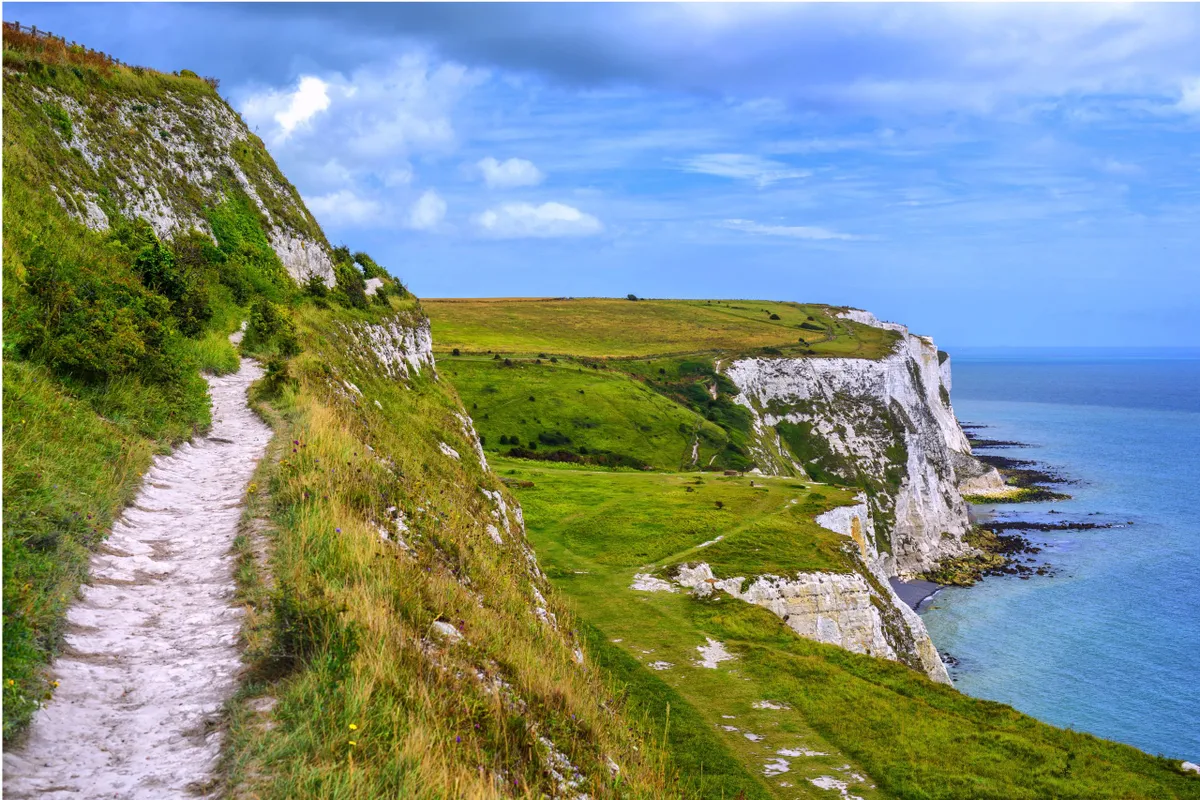An iconic stretch of Kent coastline, the White Cliffs of Dover look out on to the Strait of Dover and France.
These striking, sheer, white-chalk cliffs, accentuated by streaks of vivid black flint, have been a symbol of hope and freedom for centuries.

Guiding light
Atop the cliffs, which rise more than 100m above the sea, stands the South Foreland Lighthouse, now managed by the National Trust. This fine piece of Victorian engineering guided ships through the Strait of Dover for years, diverting them from the infamous Goodwin Sands, which has claimed over 2,000 recorded vessels. The cliffs played a significant defence role in both world wars.
At Fan Bay, you can visit two First World War sound mirrors as well as a deep tunnel complex, dug during the Second World War to provide accommodation for those working on the gun battery above.
Related articles
For stunning views of the cliffs, walk to St Margaret’s Bay or Langdon Bay; the latter involves taking a steep zigzag path down to a ladder to gain access to the beach, and is not for the faint-hearted.
Clifftop gems
A four-mile clifftop trail from White Cliffs Visitor Centre takes you past the lighthouse and its charming old-style tearoom (check for opening times) to St Margaret’s Bay, offering unrivalled vistas of the French coastline (on a clear day), as well as a view of Dover port. You can then return to the visitor centre by bus.
The clifftops are home to a number of unusual species of flora and fauna that can only be found in chalk grassland, including the rare early spider-orchid. Other flowers to spot include the oddly named oxtongue broomrape and slender bedstraw.
A herd of Exmoor ponies grazes the grassland, which also provides a home for around 30 species of butterfly, including the chalkhill blue.
The cliffs themselves are a base for the peregrine falcon, nesting ravens, a colony of kittiwakes and skylarks.